Conny Waters – AncientPages.com – The archaeological site of Ucanha in Yucatán has not been much explored; however, there are important relics that have been restored by INAH archaeologists.
One such relic is a rare and giant stucco mask from the late pre-classic period of the Mayan culture.
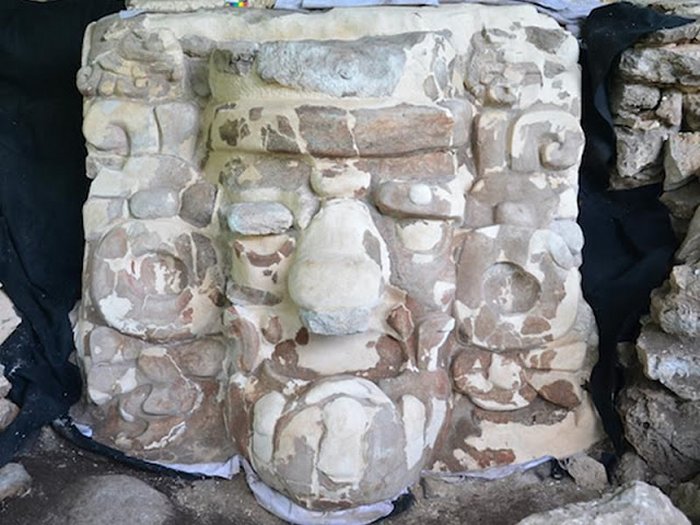 During the restoration and conservation process, archaeologists reinforced fragile parts of the mask. They also moved sections that had been displaced over time back to their original positions. Image credit: INAH
During the restoration and conservation process, archaeologists reinforced fragile parts of the mask. They also moved sections that had been displaced over time back to their original positions. Image credit: INAH
The archaeological site of Ucanha – a set of Mayan mounds – in the Mexican state of Yucatán, is located near Cansahcab and Motul, municipalities to which it was linked by the Mayan road (a sacbé), and the mask was located in the vicinity of Motul.
The Study and Conservation Project of the Stucco Mask of Structure 92 of the Ucanha archaeological site was carried out with the purpose of preserving the decorative element of the architecture of the late pre-classic period, located by archaeologist Jacob Welch of Yale University, from the United States.
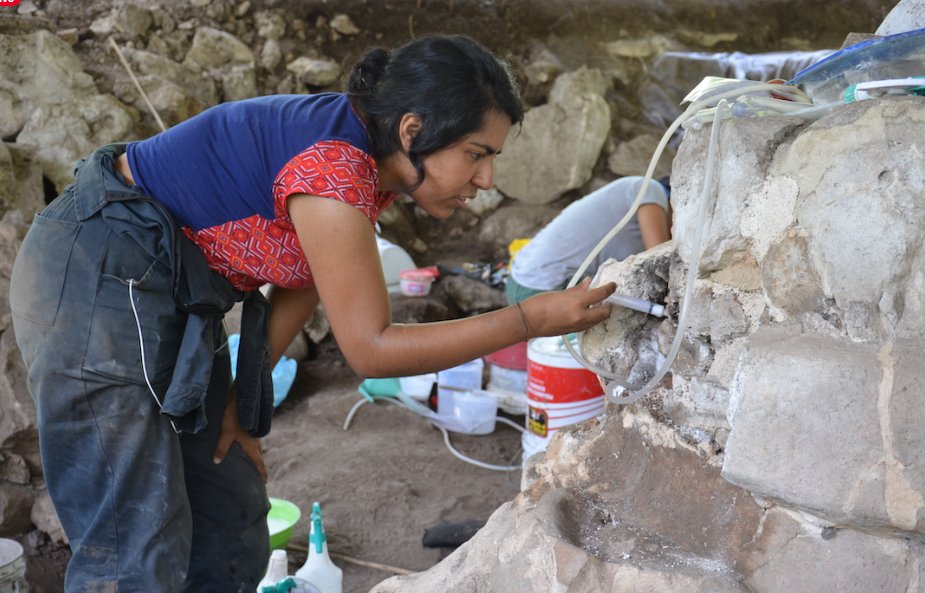 Image credit: INAH
Image credit: INAH
Structure 92 is located in the basal platform with the largest volume of the site and in one of the largest in the region that surrounds the sacbé between the settlements of Ucí and Cansahcab.
The discovery of the mask was already made in 2017, however, the INAH archaeologists decided temporarily re-bury the decorative element and start the investigation of the relic in 2018.
The Maya masks are the stucco reliefs that represent the faces of individuals with particular features that can be ᴀssociated with Mayan deities, or with characters of prominent social status.
They decorate the stairways with pyramidal bases and are profusely adorned with color.
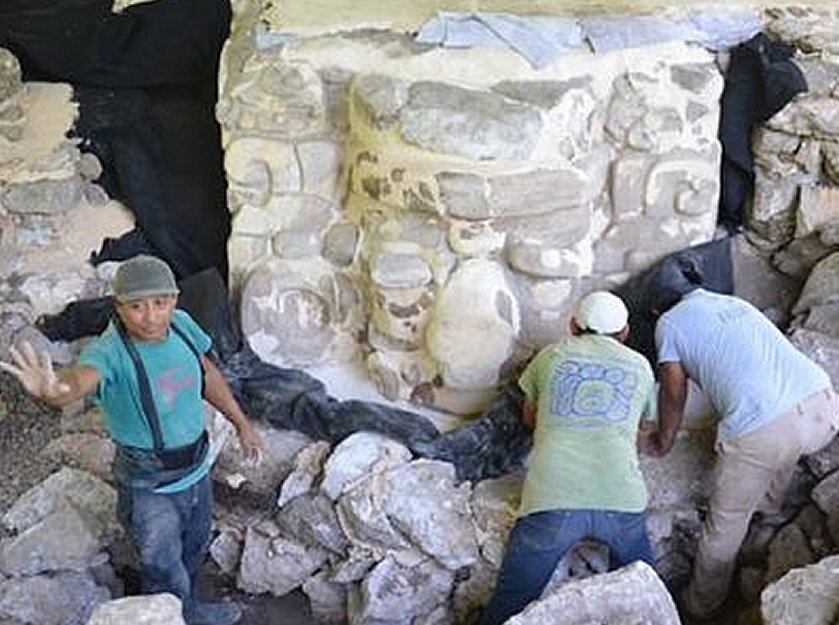 INAH archeologists working with a stucco relic. Image credit: INAH
INAH archeologists working with a stucco relic. Image credit: INAH
A unique mask in the region, the Ucanha mask represents a unique element not found anywhere else in the Maya World, and INAH seeks to ensure its long-term preservation since the archaeological site is not open to the public and does not have legal protection.
Though relatively few archaeological elements such as the mask at Ucanha have managed to survive into the 21st century, in the distant past they would have been a common sight for the ancient Maya society, who used such elements to decorate the facades of prominent structures.
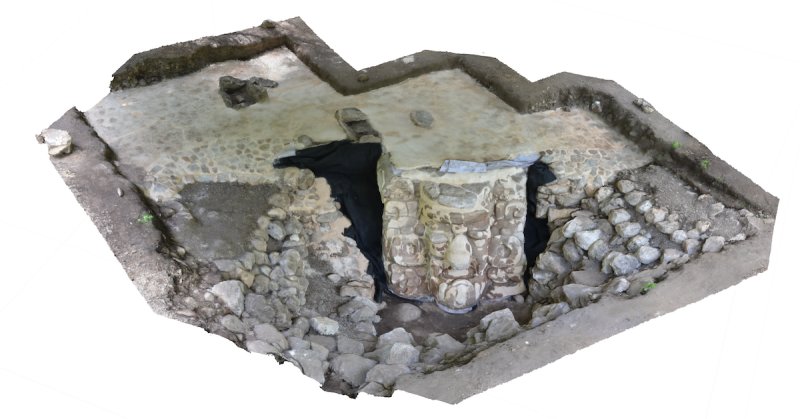
Image credit: INAH
“There are good examples of these representations in Tikal, Uaxactún, Cerros, Xunantunich, Kohunlich, Lamanai, and Calakmul in the southern lowlands, and in Yucatán at the sites of Acanceh, Izamal, and Ucanha in the northern lowlands,” INAH writes.
During the excavations, necessary conservation measures were applied that allowed the stucco coatings and reliefs to be kept in position, and to consolidate the fragile areas as well as possible, to reposition the sections that had suffered some displacement, and to carry out general cleaning of the surface.
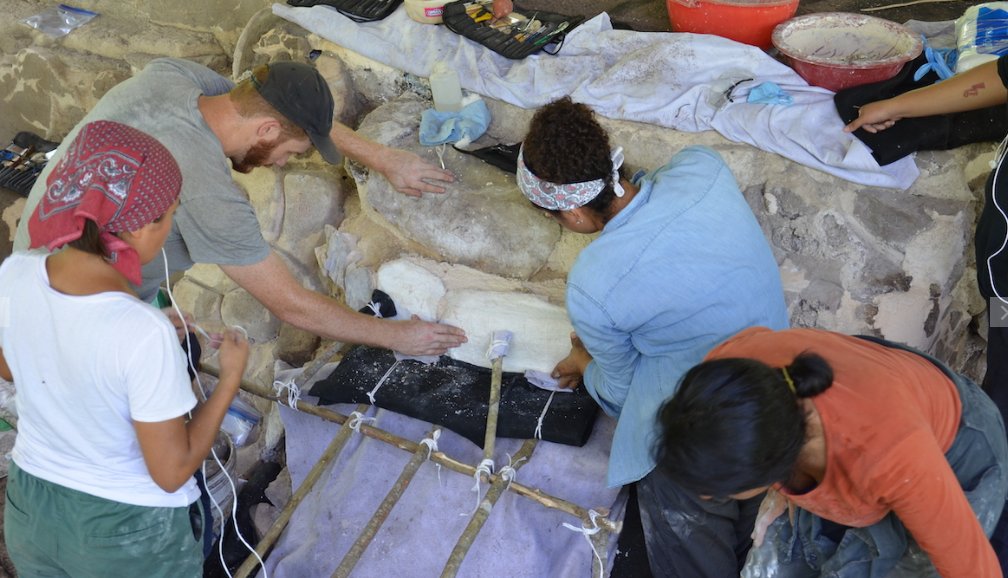 Image credit: INAH
Image credit: INAH
In 2019, the physical and chemical stabilization of the mask and the adjacent staircase was completed, as well as the cleaning of a good percentage of the surface to determine the pattern and decorative color design on the mask, as well as image studies to identify the different pigments and designs.
Once this stage was concluded, the permanent reburial was carried out to ensure the preservation of this spectacular and ancient decorative element of Yucatecan pre-classical architecture.
Written by Conny Waters – AncientPages.com Staff Writer





